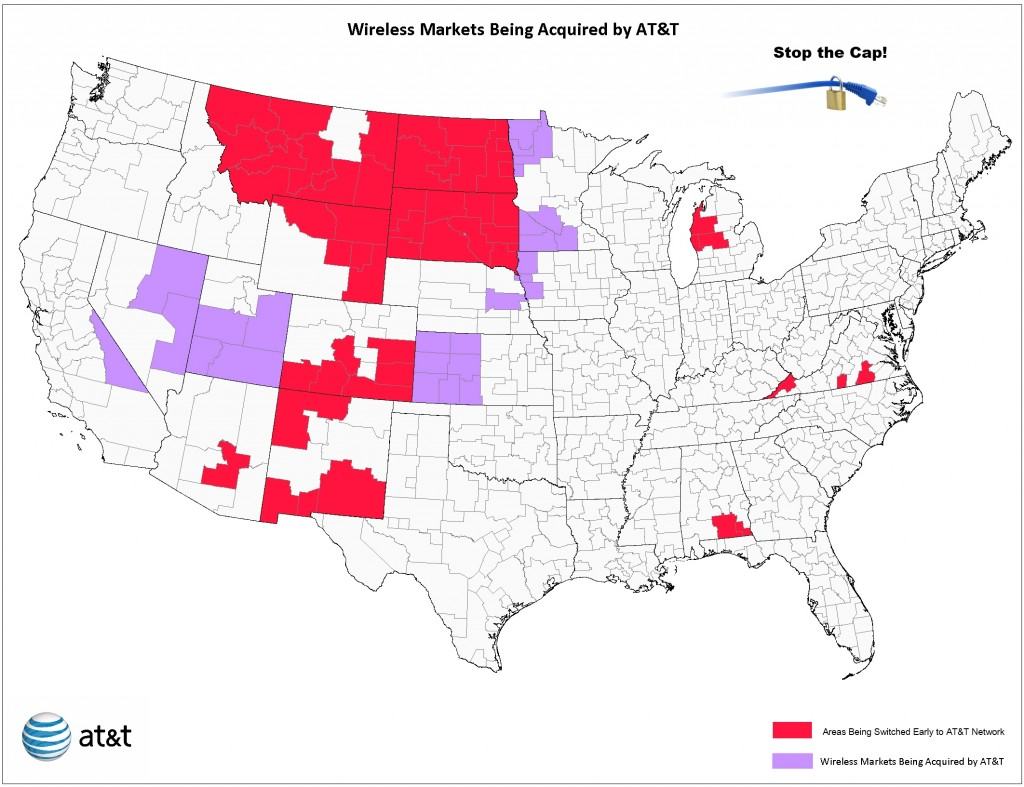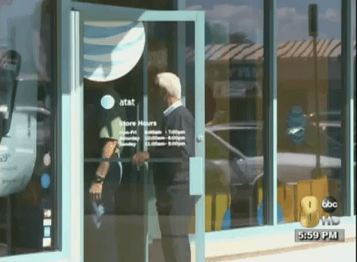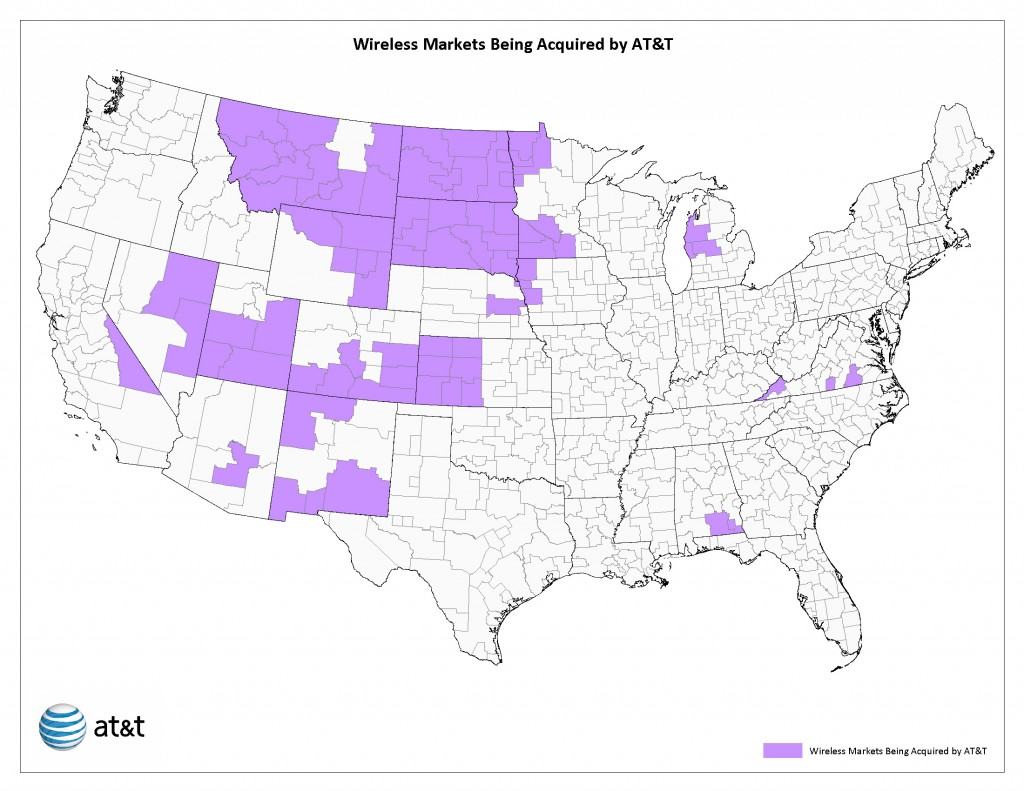 When Alltel announced the sale of its wireless business to Verizon in 2008, few Alltel customers could have foreseen they’d technically end up changing cell phone providers not once, but twice. That’s because the federal government ordered Verizon to sell off Alltel’s assets in communities where Verizon already had a substantial market share. For the sake of competition, the majority of Alltel customers in 18 states affected by the federal government divestiture order will become AT&T customers shortly.
When Alltel announced the sale of its wireless business to Verizon in 2008, few Alltel customers could have foreseen they’d technically end up changing cell phone providers not once, but twice. That’s because the federal government ordered Verizon to sell off Alltel’s assets in communities where Verizon already had a substantial market share. For the sake of competition, the majority of Alltel customers in 18 states affected by the federal government divestiture order will become AT&T customers shortly.
That poses a problem because Alltel’s network and phones use CDMA network technology. AT&T uses a different standard called GSM. The two standards are not compatible. Since AT&T has no intention of operating a CDMA network for Alltel customers, once AT&T converts Alltel’s cell sites to operate on its own network, every Alltel customer will be left with phones and equipment that will no longer work.
To make the deal work, AT&T has agreed to provide, at no charge, comparable brand new phones and other equipment to Alltel customers being moved to AT&T’s network. No new contract is required, and customers will not be forced to extend one to receive the new AT&T equipment.
But that deal doesn’t extend to handing out free iPhones to Alltel customers. If you want one of those, you will have to pony up the same money every other AT&T customer pays, and sign a new two-year contract.
 This week, AT&T announced it was speeding up the transition, and many customers will be choosing new free phones around the end of this year or in early 2011. Originally, AT&T expected it would take until mid-2011 to complete network conversions. Complete details can be found on the AT&T-Alltel Transition Website.
This week, AT&T announced it was speeding up the transition, and many customers will be choosing new free phones around the end of this year or in early 2011. Originally, AT&T expected it would take until mid-2011 to complete network conversions. Complete details can be found on the AT&T-Alltel Transition Website.
For residents in the north-central United States, the iPhone craze has been something other Americans have experienced. For much of the Dakotas and Montana, the transition will bring the first opportunity to get the popular smartphone at the subsidized price AT&T offers all of its customers on contract.
The implications of AT&T’s imminent arrival in the area doesn’t seem to bother the other dominant provider – Verizon Wireless. In South Dakota, AT&T’s entry into the market may cause some to switch to AT&T, if only for the iPhone. But Karen Smith, spokeswoman for Verizon Wireless in the Great Plains region, says Verizon is confident with the lineup of phones it already offers and remains the nation’s largest wireless carrier even without the iPhone.
Current Verizon customers like Jill Garrigan of Rapid City told the Rapid City Journal she’d consider switching to AT&T to grab the iPhone, but she’d much prefer buying one from Verizon Wireless.
“If Verizon carried the iPhone, I’d probably consider getting it from Verizon,” Garrigan said.
Many other South Dakotans share concerns about the higher monthly wireless bills the iPhone brings, and they’re not interested in paying a lot more just to own one.
Garrigan’s friend, Jessica Simon, said she’ll keep her current Samsung phone, thank you very much. The reason? “It’s all the additional money and all the surcharges,” she told the newspaper.
But local cell phone dealers believe the arrival of Apple’s iPhone will cause a sensation across the region, and they’ve already fielded calls from customers anxious to acquire one.
Stop the Cap! has created a map showing the areas due for early conversion for your convenience.


Areas shaded in red are scheduled for early conversion to AT&T's GSM Network (click to enlarge)
[flv width=”640″ height=”500″]http://www.phillipdampier.com/video/Alltel ATT Transition Ahead of Schedule 9-4-10.flv[/flv]
Stop the Cap! has compiled news reports from across the region regarding the AT&T-Alltel transition and its impact on states including the Dakotas, Montana and Wyoming. Clips courtesy of WDAY-TV Fargo, N.D., KGWN-TV Cheyenne, Wyo., KECI-TV Missoula, Mont., and KFYR-TV Bismarck, N.D. (4 minutes)
Upgrade Specifics
The following counties are on AT&T’s early upgrade list (RSA=Rural Service Area):
Alabama: Greater Dothan area and RSA 7 including Butler, Coffee, Covington, Crenshaw, Geneva and Pike Counties.
Arizona: RSA 5 including Gila and Pinal Counties.
Colorado: RSA 4 includes Chaffee, Custer, Fremont, Lake and Park Counties. RSA 5 includes Cheyenne, Elbert, Kit Carson and Lincoln Counties. RSA 6 includes Dolores, Hinsdale, La Plata, Montezuma, Ouray, San Juan and San Miguel Counties. RSA 7 includes Alamosa, Archuleta, Conejos, Mineral, Rio Grande and Saguache Counties. RSA 8 includes Bent, Crowley, Kiowa, Otero and Prowers Counties. RSA 9 includes Baca, Costilla, Huerfano and Las Animas Counties.
Michigan: Greater Muskegon area and RSA 5 includes Benzie, Lake, Leelanau, Manistee, Mason, Missaukee, Osceola and Wexford Counties. RSA 7 includes Gratiot, Isabella, Mecosta, Montcalm and Newaygo Counties.
Montana: Greater Billings and Great Falls areas and RSA 1 includes Flathead, Glacier, Lake, Lincoln, Pondera, Sanders and Teton Counties. RSA 2 includes Blaine, Chouteau, Hill, Liberty and Toole Counties. RSA 4 includes Daniels, Dawson, McCone, Richland, Roosevelt, Sheridan and Wibaux Counties. RSA 5 includes Granite, Lewis and Clark, Mineral, Missoula, Powell and Ravalli Counties. RSA 6 includes Broadwater, Deer Lodge, Jefferson, Judith Basin, Meagher, Silver Bow and Wheatland Counties. RSA 7 includes Fergus, Golden Valley, Musselshell, Petroleum, Stillwater and Sweet Grass Counties. RSA 8 includes Beaverhead, Gallatin, Madison and Park Counties. RSA 9 includes Big Horn, Carbon, Rosebud and Treasure Counties. RSA 10 includes Carter, Custer, Fallon, Powder River and Prairie Counties.
New Mexico: Greater Las Cruces area and RSA 1 includes Cibola, McKinley, Rio Arriba, San Juan and Taos Counties. RSA 5 includes Grant, Hidalgo and Luna Counties. RSA 6 includes Chaves, Eddy, Lee, Lincoln and Otero Counties.
North Dakota: Greater Fargo, Grand Forks, and Bismarck areas and RSA 1 includes Burke, Divide, McLean, Mountrail, Renville, Ward and Williams Counties. RSA 2 includes Benson, Bottineau, Cavalier, McHenry, Pierce, Ramsey, Rolette and Towner Counties. RSA 3 includes Barnes, Dickey, Griggs, LaMoure, Nelson, Pembina, Ransom, Richland, Sargent, Steele, Traill and Walsh Counties. RSA 4 includes Adams, Billings, Bowman, Dunn, Golden Valley, Grant, Hettinger, McKenzie, Mercer, Oliver, Sioux, Slope and Stark Counties. RSA 5 includes Eddy, Emmons, Foster, Kidder, Logan, McIntosh, Sheridan, Stutsman and Wells Counties.
South Dakota: Greater Sioux Falls and Rapid City areas and RSA 1 includes Butte, Harding, Lawrence and Perkins Counties. RSA 2 includes Campbell, Corson, Dewey, Potter, Walworth and Ziebach Counties. RSA 3 includes Brown, Edmunds, Faulk, McPherson and Spink Counties. RSA 4 includes Clark, Codington, Day, Deuel, Grant, Hamlin, Marshall and Roberts Counties. RSA 5 includes Custer, Fall River and Shannon Counties. RSA 6 includes Bennett, Gregory, Haakon, Jackson, Jones, Lyman, Mellette, Stanley, Todd and Tripp Counties. RSA 7 includes Aurora, Brule, Buffalo, Charles Mix, Davison, Douglas, Hand, Hughes, Hyde, Jerauld and Sully Counties. RSA 8 includes Beadle, Brookings, Kingsbury, Lake, Miner, Moody and Sanborn Counties.RSA 9 includes Bon Homme, Clay, Hanson, Hutchinson, Lincoln, McCook, Turner, Union and Yankton Counties.
Virginia: Greater Danville, Norton and South Hill areas and RSA 1 includes Buchanan, Dickenson, Lee, Russell, and Wise Counties and Norton City. RSA 8 includes Amelia, Brunswick, Lunenburg, Mecklenburg and Nottoway Counties.
Wyoming: Greater Casper area and RSA 1 includes Big Horn, Hot Springs, Park and Washakie Counties. RSA 2 includes Campbell, Crook, Johnson, Sheridan and Weston Counties. RSA 4 includes Albany, Goshen, Laramie, Niobrara and Platte Counties. RSA 5 includes Converse County.



 Subscribe
Subscribe







